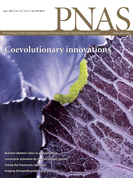July 2008 - Having a higher than normal level of fetuin-A, a protein produced in the liver and secreted into the blood stream, is associated with an increased risk of the development of diabetes, according to a study in the July 9 issue of JAMA.
"Type 2 diabetes mellitus has become a global epidemic and the increased prevalence of obesity is a major contributing factor. However, diabetes does not develop in all obese individuals and there is a strong genetic contribution to risk. Despite significant recent advances, mechanisms responsible for individual differences in clinical phenotype remain largely unknown," the authors write. Previous studies have found an association between higher fetuin-A levels and insulin resistance, but the association with incident type 2 diabetes mellitus is unknown.
Joachim H. Ix, M.D., M.A.S., of the University of California, San Diego, and San Diego Veterans Affairs Healthcare System, and colleagues conducted a study to examine whether higher fetuin-A levels are associated with the occurrence of diabetes in older persons. The study included 406 persons (age 70 to 79 years) without diabetes at the start of the study, and who had fetuin-A levels measured at baseline, and had six years of follow-up. Diabetes developed in 135 participants (10.1 cases/1,000 person-years [the number of individuals in the study times the number of years of follow-up per person]).
Analysis indicated a graded increase in the incidence of diabetes with increased fetuin-A levels. The third of the group with the highest levels had more than twice the incidence rate compared with the lowest third (13.3 vs. 6.5 cases/1,000 person-years). The association was independent of physical activity, inflammatory biomarkers, and other commonly available measures of insulin resistance and was irrespective of sex, race, and obesity status. The association was moderately weakened by adjustment for visceral adiposity (fat accumulation around the abdomen).
"Future studies should evaluate whether the results may generalize to middle-aged individuals in whom the [diabetes] incidence rate is highest. If confirmed in future studies, fetuin-A may ultimately prove useful as a target for therapeutics, and its study may provide novel insights to glucose metabolism in humans," the authors conclude.
Continue Reading Below ↓↓↓
JAMA. 2008;300[2]:182-188
Source: American Medical Association










